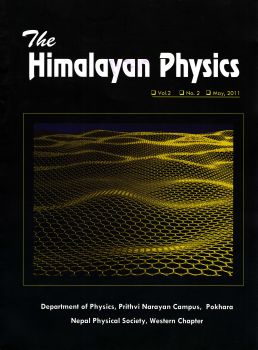Fluctuation of seismic activity associated with 1999 Chamoli earthquake
DOI:
https://doi.org/10.3126/hj.v2i2.5203Keywords:
Anomalous seismicity, Central Himalaya, Precursory swarm, Earthquake forecastAbstract
The Chamoli earthquake of March 28, 1999 (Mb 6.6, Origin time: 19:05:12, epicenter at 30.5° N 79.4° E and Focal depth 23 km) occurred in the Himalayan front arc which caused severe damage in the region. Anomalous seismic activity associated with this recent devastating earthquake in the Central Himalaya region in an area bounded by 30.0°-31.0° N and 79.0°-80.0° E have been studied using seismicity data from 1980-2000. The preparatory zone is delineated using the temporal and the spatial distribution of earthquakes, considering the events with cutoff magnitude mb ≥ 4.3. Daily number of events as well as cumulative number of earthquake with time within the preparatory zone has been considered as basis for identification of anomalous seismicity. Accordingly four anomalous episodes: Normal/ background (N); Anomalous/ swarm (A); Precursory gap (G) and Mainshock sequence (M) are identified. It is observed that the event was preceded by well defined patterns of anomalous seismicity/ precursory swarm which was lasted for about seven month and had started about three years and four months prior to mainshock.
Key words: Anomalous seismicity; Central Himalaya; Precursory swarm; Earthquake forecast
The Himalayan Physics
Vol.2, No.2, May, 2011
Page: 11-15
Uploaded Date: 31 July, 2011
Downloads
460
557




